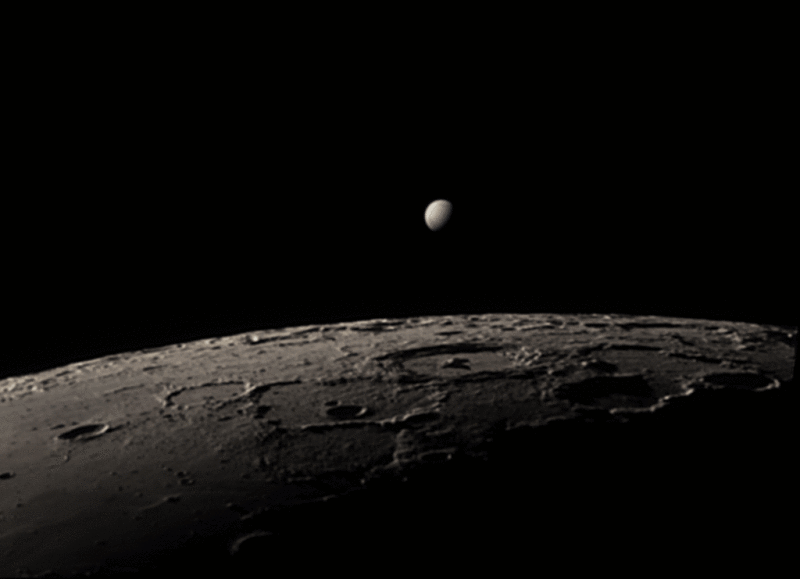
|
Credit & Copyright: Quentin Gineys
Explanation:
On May 27 Venus rose as the morning star, near the
waning crescent Moon
in a predawn sky
already full of planets.
It
was close
on the sky to the Moon's crescent and a
conjunction of the second an third brightest celestial beacons
were enjoyed by skygazers around the world.
But seen from locations along a track through southeast Asia
and the Indian Ocean
the Moon actually passed in front of Venus in
a lunar occultation.
In this animated gif the 75 percent illuminated disk of
Venus approaches
and just begins to disappear behind the sunlit southwestern lunar limb.
The telescopic frames
used to construct it were captured
from Reunion Island in the Indian Ocean around 4:50am local time,
with the Moon and Venus very close to the eastern horizon.
At the time Venus
was over 180 million kilometers from Reunion Island,
compared to a lunar distance of a mere 400 thousand kilometers or so.
About 50 minutes later Venus emerged from
behind the Moon.
|
January February March April May June July August September October November December |
| ||||||||||||||||||||||||||||||||||||||||||||||||
NASA Web Site Statements, Warnings, and Disclaimers
NASA Official: Jay Norris. Specific rights apply.
A service of: LHEA at NASA / GSFC
& Michigan Tech. U.
Based on Astronomy Picture
Of the Day
Publications with keywords: Venus - Moon - occultation
Publications with words: Venus - Moon - occultation
See also:
- APOD: 2025 August 23 B Fishing for the Moon
- APOD: 2025 July 20 B Lunar Nearside
- APOD: 2025 June 28 B Lunar Farside
- APOD: 2025 June 20 B Major Lunar Standstill 2024 2025
- APOD: 2025 June 18 B Space Station Silhouette on the Moon
- APOD: 2025 May 11 B The Surface of Venus from Venera 14
- APOD: 2025 April 22 B Terminator Moon: A Moonscape of Shadows
